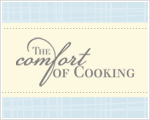Freezing Food Safety
December 28, 2009
There are some important things you need to know about food safety if you really want to dive into Freezer Cooking.

What Can You Freeze?
You can freeze almost any food. Some exceptions are canned food or eggs in shells. However, once the food (such as a ham) is out of the can, you may freeze it. Ummm...Ham in a can? Gross.
Being able to freeze food and being pleased with the quality after defrosting are two different things. Some foods simply don't freeze well. Examples are mayonnaise, cream sauce and lettuce. Raw meat and poultry maintain their quality longer than their cooked counterparts because moisture is lost during cooking. For my list of freezables click here.
Does Freezing Destroy Bacteria & Parasites forever?
No. Freezing to 0 °F inactivates any microbes -- bacteria, yeasts and molds - - present in food. Once thawed, however, these microbes can again become active, multiplying under the right conditions to levels that can lead to food borne illness. Since they will then grow at about the same rate as microorganisms on fresh food, you must handle thawed items as you would any perishable food.
Packaging
Proper packaging helps maintain quality and prevent "freezer burn." It is safe to freeze meat or poultry directly in its supermarket wrapping but this type of wrap is permeable to air. Unless you will be using the food in a month or two, overwrap these packages as you would any food for long-term storage using airtight heavy-duty foil, (freezer) plastic wrap or freezer paper, or place the package inside a (freezer) plastic bag. Use these materials or airtight freezer containers to repackage family packs into smaller amounts. It is not necessary to rinse meat and poultry before freezing. Freeze unopened vacuum packages as is. If you notice that a package has accidentally been torn or has opened while food is in the freezer, the food is still safe to use; merely overwrap or re-wrap it.
Safe Defrosting
Never defrost foods in a garage, basement, car, dishwasher or plastic garbage bag; out on the kitchen counter, outdoors or on the porch. These methods can leave your foods unsafe to eat.
There are three safe ways to defrost food: in the refrigerator, in cold water, or in the microwave. It's best to plan ahead for slow, safe thawing in the refrigerator. Small items may defrost overnight; most foods require a day or two. And large items like turkeys may take longer, approximately one day for each 5 pounds of weight.
For faster defrosting, place food in a leak proof plastic bag and immerse it in cold water. (If the bag leaks, bacteria from the air or surrounding environment could be introduced into the food. Tissues can also absorb water like a sponge, resulting in a watery product.) Check the water frequently to be sure it stays cold. Change the water every 30 minutes. After thawing, cook immediately.
When microwave-defrosting food, plan to cook it immediately after thawing because some areas of the food may become warm and begin to cook during microwaving.
The temperature of your cooked meats really matters.
Really the best way to determine if a cooked meat is done is not the cooking time of the recipe, but the internal temperature of the meat. This provides two great results. Avoiding under cooking the meat means less food born illness and avoiding overcooking the meat mean more moist, juicy meats.
The amount of time your food it takes your food to cool is important.
Bacteria grows most easily at a certain temperature. The danger zone of bacteria growth is luke warm. So, when you're cooling down or freezing your food yo must change the temperature from warm to cold in the quickest way possible. For instance, if you were freezing soup, rather than putting in your freezer in a deep pot, you should spread it out into a shallow dish so that it all comes down in temperature more quickly. This also mean you should not cover meat if storing in the fridge until plastic wrap covering it would not accumulate steam. Put it into the fridge uncovered until cool. Never stack packages to be frozen. Instead, spread them out in one layer on various shelves, stacking them only after frozen solid
Cross Contamination
If you've been in food service you know the drill. You should not cut raw meat and raw veggies with the same knife or on the same cutting board. Doing so can transfer harmful bacteria from one food to another. As a general rule you should always use the above rule, but it's especially important when assembling freezer meals because it's a time when you are much more likely to be chopping these foods at once since we are assembling meals.
*Most information from the USDA website. Read more...


















